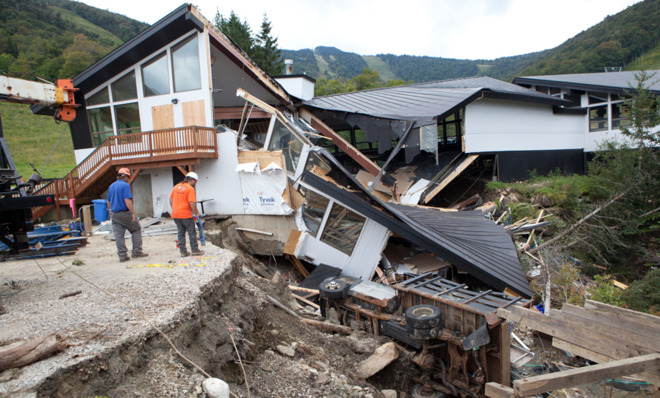What climate change is already costing you
Climate change is no longer an abstract concept


Extreme weather and climate change are taking a toll as storms, droughts, fires, and rising sea levels endanger local economies, impacting not only your wallets but in some cases — your life.
Climate change, once an abstract concept, is now a reality in the lives of many Americans, as the National Climate Assessment study released on May 6 highlights. Federal, state, and local governments as well as private local companies have taken measures to curb consequences, but often, these steps aren't nearly enough to make a dent in the economic and safety consequences of climate change.
Based on the report, here are some examples of climate change's financial and human impact on America and how it can be mitigated:
The Week
Escape your echo chamber. Get the facts behind the news, plus analysis from multiple perspectives.

Sign up for The Week's Free Newsletters
From our morning news briefing to a weekly Good News Newsletter, get the best of The Week delivered directly to your inbox.
From our morning news briefing to a weekly Good News Newsletter, get the best of The Week delivered directly to your inbox.
HURRICANES
The cost: Coastal counties in Alabama, Mississippi, Louisiana, and Texas face annual losses averaging annually $14 billion from hurricane winds, land subsidence, and sea rise level; future losses by 2030 could reach $19 billion to $24 billion annually, according to a recent study co-sponsored by Entergy, a regional utility.
What's being done: The study identified $7 billion in cost-effective adaptation investments (like improved construction codes and restoration of wetlands) that could reduce estimated annual losses by about 30 percent by 2030.
HEAVY RAINFALL
A free daily email with the biggest news stories of the day – and the best features from TheWeek.com
The cost: Heavy rainfall in December 2007 in western Washington State coupled with melting snow from the mountains flooded highways. High winds, heavy rains, mudslides, and falling trees disrupted transportation, and cost more than $130 million, including interstate disruptions as well as damage from the storm on state routes and city and county roads.
What's being done: Seattle's RainWatch program uses an early warning precipitation forecasting tool to help inform decisions about issues such as drainage operations and provide a more accurate picture of the current hydrological state of the region.
HEAT WAVES
The cost: The frequency of major heat waves in the Midwest is on the rise. During the 1995 Chicago heat wave, about 700 people died, and one study by the National Center for Biotechnology Information projected an increase of between 166 and 2,217 excess deaths per year from heat wave-related mortality in Chicago by 2081-2100.
What's being done: Heat response plans and early warning systems save lives but many municipalities lack such plans.
DROUGHT
The cost: The drought of 2011 reduced crop fields and affected livestock. The price tag for Texas farmers and ranchers was more than $5 billion (an amount reimbursed to farmers by the taxpayer funded farm bill), a 28 percent loss compared to average revenue of prior years, according to Texas AgriLife Extension Service economists. Strong fires also killed two people, destroyed 1,673 homes and caused $325 million in damage.
What's being done: The Texas Commission on Environmental Quality requests public water suppliers to submit drought contingency plans and Texas created an Emergency Drinking Water Task Force following the 2011 drought to coordinate resources. But more is needed to address future droughts.
FLOODS
The cost: In August 2011, tropical storm Irene brought inundations and flooding to Vermont, closing 146 segments of the state road system and more than 200 bridges. It ended up costing an estimated $175 million to $200 million to rebuild highways and bridges.
What's being done: The Vermont Agency of Transportation is working with the Vermont Agency of Natural Resources to study the structures of rivers. They recognize that risk reduction may involve managing rivers as much as upgrading bridges and roadways. But VTrans has said that it doesn't have the needed funds to begin rebuilding the entire highway network to withstand future flooding.
More from The Fiscal Times...
-
 Into the Woods: a ‘hypnotic’ production
Into the Woods: a ‘hypnotic’ productionThe Week Recommends Jordan Fein’s revival of the much-loved Stephen Sondheim musical is ‘sharp, propulsive and often very funny’
-
 ‘Let 2026 be a year of reckoning’
‘Let 2026 be a year of reckoning’Instant Opinion Opinion, comment and editorials of the day
-
 Why is Iran facing its biggest protests in years?
Why is Iran facing its biggest protests in years?TODAY’S BIG QUESTION Iranians are taking to the streets as a growing movement of civic unrest threatens a fragile stability